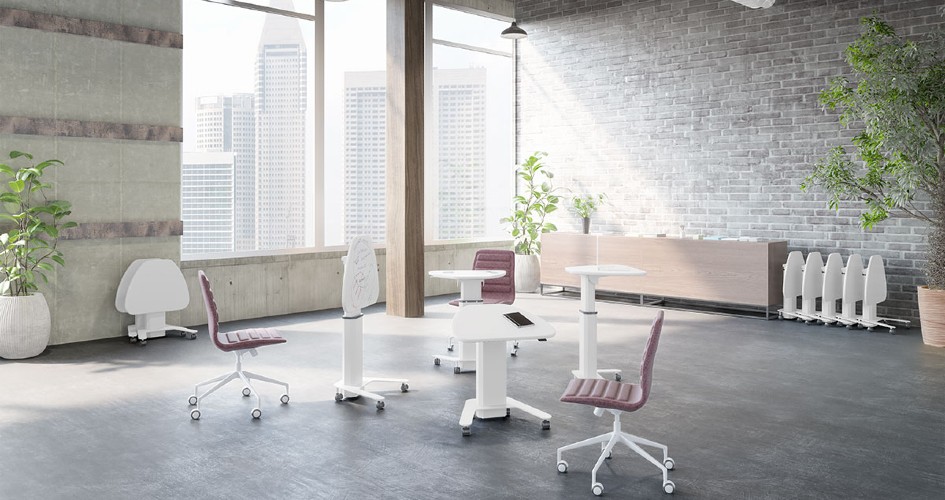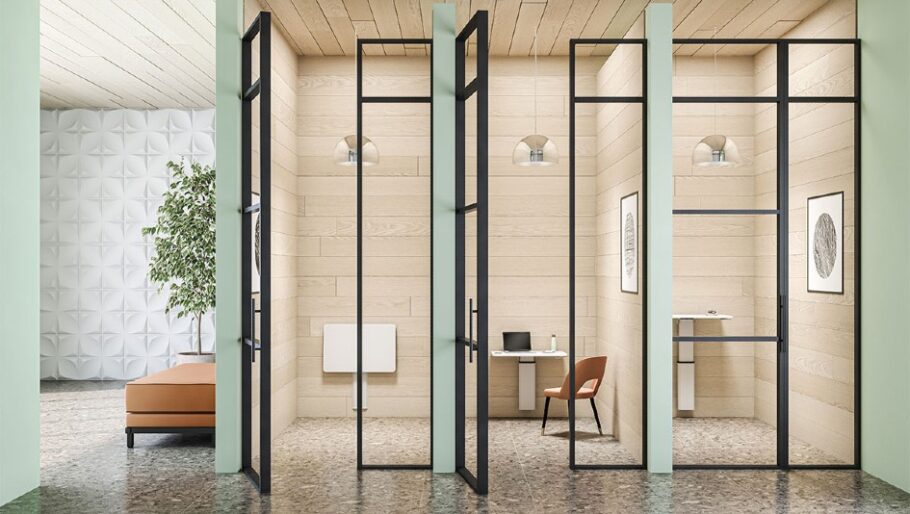Today’s economy is a bit like the weather. When it’s sunny and business is good, everyone is happy. But when clouds roll in, we turn our eyes to sky and realize that a change is coming. While some people still see blue skies above, other economic “weather reports” are forecasting a potential recession.
So, what might this mean for the contract office market? For many employers, they are preparing for uncertainty and planning for cost reductions, which could include short-term belt-tightening to larger scale, longer-term savings such as real estate optimization.
For designers and facility managers, space consolidation may present a challenge. How do you maximize the square footage of a condensed space for potentially the same number of workers / hybrid workers? How do you design “I want to work here” spaces that foster inclusiveness, productivity, wellbeing and connectivity when budgets are being reduced?
There is no silver bullet to these questions. But we believe there are four fundamental elements that should be considered for any space design, especially when a recession is looming, dollars are tight and retaining and attracting top talent is essential. These elements include designing for wellness, productivity, technology and connectivity.
Wellness and Productivity are Paramount
It’s no secret that the effects of the pandemic continue to shape the design of workplaces and how workers feel about them. If nothing else, the pandemic placed an emphasis on personal health and wellbeing. In fact, according to the 2022 Work Trend Index, 53 per cent of employees are more likely to prioritize health and wellbeing over work than before the pandemic. Additionally, the pandemic opened up Pandora’s box of new worker variables. Notably, workers grew accustomed to working remotely and they got used to it, primarily because of the flexibility it offered.
Now, many employers want their workers back in the office for a portion of the week, if not all. This means designers must strike a critical balance: Supporting those employees who want a choice in where they work and creating workplace environments employees want to return to that foster meaningful in-person connections.
Let’s focus on employee health and wellness. When a worker’s wants and needs are being met, research shows they are happier, and happier employees are 20 per cent more productive than unhappy employees. Offering people intelligent work tools that adapt to each person’s specific preference is key.
This can include height adjustable desks, articulating monitor arms and an ergonomic chair. These types of products not only empower the individual to work the way they choose, but also foster movement, allowing people to alter their posture throughout the day, which is an added health benefit. Aside from individual workstations, think of multiple destinations with flexible products that support employees’ ability to posture differently throughout the day.
Connectivity Makes a Comeback
A main reason employers and employees are coming back to the office is for human connectivity. We’ve all come to realize that there is no replacing the learning, iterating, brainstorming and problem solving that comes from being connected to our teammates in-person.
Today, workspaces are being reimagined to spark productive, in-person collaboration. Because of this, the spaces and tools required for workplaces are much different than those from just a few years ago. For example, we’re seeing an evolution of the conference room. To maximize every square foot of space, the traditional conference room – a space with a single fixed table and chairs – may not be the best solution.
To take full advantage of this type of space, design for maximum flexibility. Reimagine the new conference room where mobile, individual workstations can come together to support the work of a particular team using the space. When the meeting is over, tables can be stowed away and ready for the next team to configure to their specific needs.

Tech Now More Than Ever
One thing is for sure, technology integration is here to stay – we’re reliant on it now more than ever. Count how many times you’ve said, “You’re still on mute.” With co-working, hybrid work, the prospect of reduced workplace footprints and the need for improved human connection, technology integration must account for the employees working onsite and those working remotely.
Consider incorporating enclaves or “phone booths” with integrated technology for floor plans that are condensed. This thoughtful addition allows for workers to retreat to these spaces for telepresence calls without disturbing their workmates. It also serves as a great heads-down private space when needed.
Adjust Your Space Accordingly
If a company is considering downsizing to a smaller footprint, careful consideration must be given to the types of workstations that are best suited for those compacted work environments. Maximizing space may result in employees migrating to a benching scenario. Acoustics are often the biggest complaint for this type of solution, so incorporate dividers with sound barrier integration or even mobile, slide-on dividers for individuals to use when a dose of privacy is needed.
For co-working spaces, height adjustable individual workstations enable a 6’2” employee and a 5’4” employee to use the exact same product, but at their own desired height. An accompanying ergonomic chair, which instinctively adapts to individual body types, is also a smart solution for co-working set ups. And, when a workstation includes an articulating monitor arm, workers can easily use one or multiple monitors (depending on what they prefer). They can also adjust the screen(s) to their own viewing preference, which can fuel performance and provides better health benefits.
Planning for the Future
Weather reports may not always be accurate. But if the forecast calls for rain, it’s good to be prepared. The same can be said for office and facility design. If recession clouds roll in and office real estate contractions take hold, it’s wise to have a sustainable plan in place. By using highly adaptable and flexible workstations – and placing wellness, productivity, technology integration and connectivity at the core of space design – companies will be well positioned for the storm clouds gathering today, as well as the brighter days that will surely come.
Libby Ferin is the CMO of HAT Collective, a brand that designs and develops innovative workplace product solutions that empowers people to work their way. She can be reached at lferin@team-hat.com.






